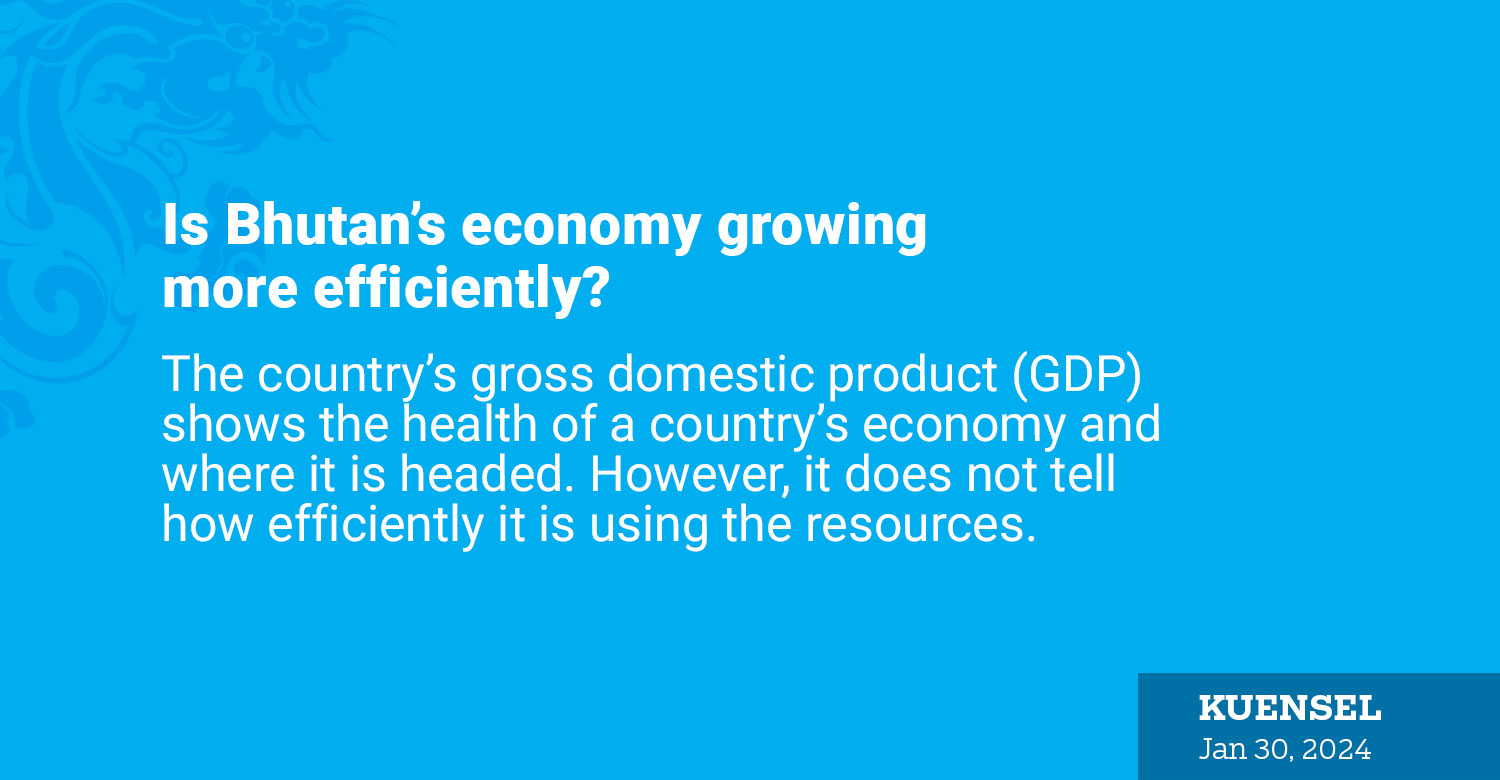
The country’s gross domestic product (GDP) shows the health of a country’s economy and where it is headed. However, it does not tell how efficiently it is using the resources.
Incremental capital output ratio (ICOR) explains the relationship between the level of investment made in the economy and subsequent increase in the GDP.
From the Royal Monetary Authority’s (RMA) figures, Bhutan’s capital productivity has been declining over the years, showing economic inefficiency.
Bhutan saw an ICOR of 8.3 in 2019 which increased to 10.6 and 11.1 in 2021 and 2022 respectively. The investment rate of 45.3 percent of GDP was recorded in 2019 and 45 percent in 2021, which saw an increase to 55.1 percent in 2022.
At the same time, the GDP was recorded at 5.8 percent in 2019, 4.4 percent and 5.2 percent in 2021 and 2022 respectively.
Higher the ICOR, less the productivity of capital. A lower capital-output ratio indicates that a lower level of investment is required to produce a given growth rate in the economy, considered to be a desirable situation. A lower capital-output ratio also shows that capital is very productive or efficient.
Bhutan’s ICOR was 11.1 in 2022 which means that Nu 11.1 worth of capital investment is necessary to generate Nu 1 of extra production. Bhutan’s ICOR of 10.6 the previous year means Bhutan had become less efficient in its use of capital.
Economists suggested an ideal ICOR of 3-4 percent for the ideal countries. Most of the countries have an ICOR near to 3 and an ICOR of 11.1 for Bhutan signifies one of the highest ICOR or inefficient economies globally.
ICOR in Bhutan is on the rise where Bhutan’s economy is being driven by infrastructure projects with the hydropower projects.
This dominance of projects will grow even more as the country accelerates its development pace with major infrastructure projects including hydropower and other significant national projects.
The RMA stated that a higher rate of domestic investment rates was recorded during pre-pandemic, while in the post-pandemic period, the rates were lower but showed progress.
The rate of domestic investment in the country, measured by the ratio of gross capital formation to the GDP in current prices, surged to 55.8 percent in 2022 from 44.4 percent in 2021. The upward in the ratio was driven mainly by the private investment due to pick-up in pending construction activities.
For a GDP target of USD 10 billion by 2034, a cumulative investment requirement of about Nu 1.5 trillion is required over the next 10 years.
The domestic saving rate saw a slight increase, rising from 28.3 percent in 2021 to 29.7 percent in 2022.












